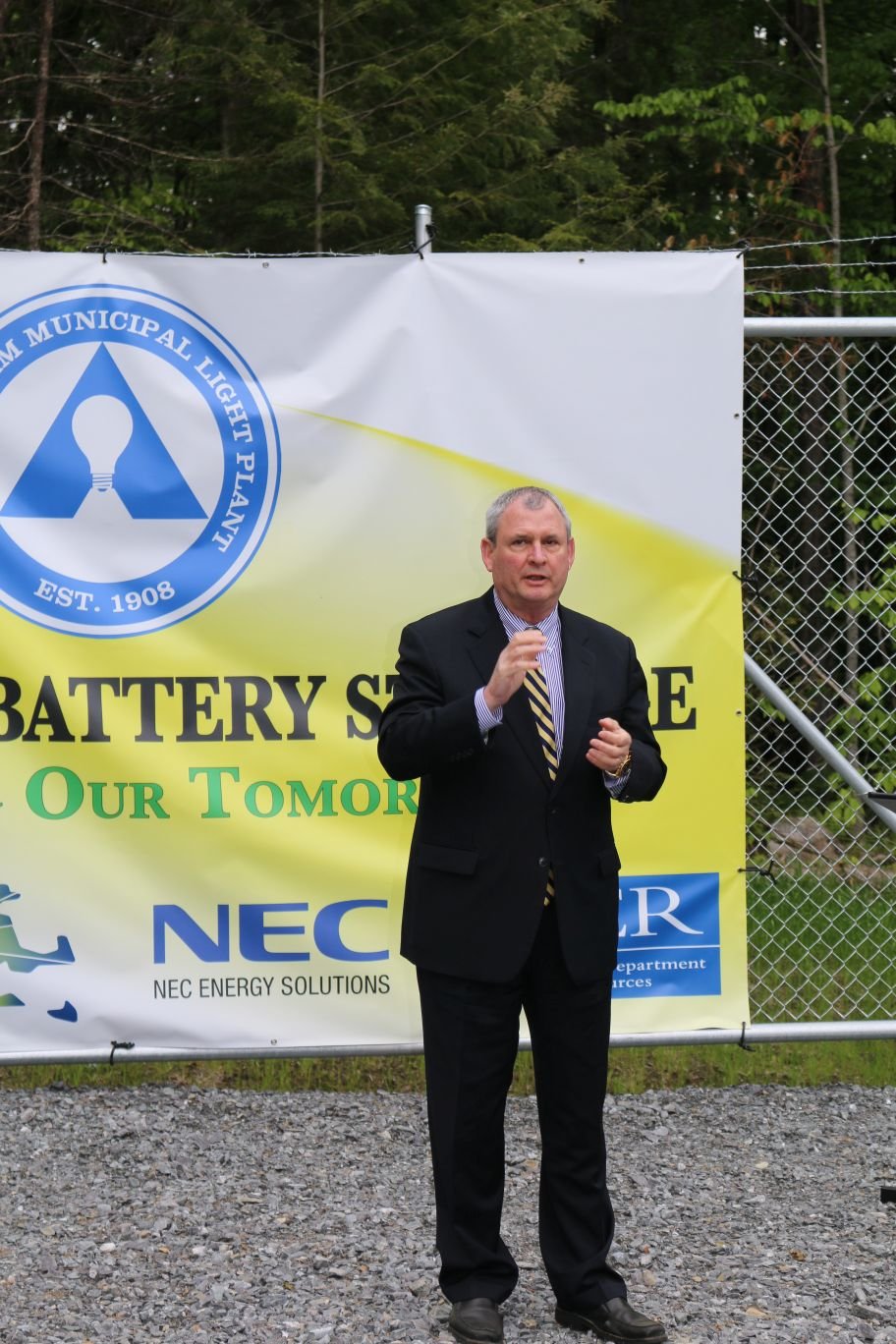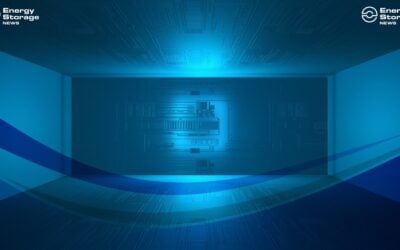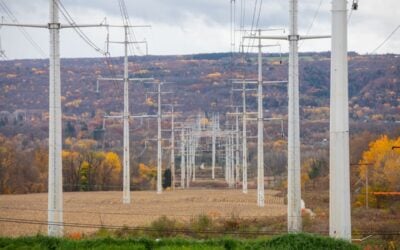
Two of the best known system integrators in the energy storage field have just completed work on large-scale battery systems on the eastern coast of the US, NEC in Massachusetts and Aggreko in New York.
A ribbon-cutting ceremony was held last Wednesday, 29 May, in Ashburnham, Massachusetts, as utility Ashburnham Municipal Light Plant (AMLP) officially inaugurated a US$3.5 million ESS plant that went online in January.
Delivered by NEC’s Energy Solutions division, the 3MW / 5MWh system stores energy which can be outputted at times of peak load on the local network, thereby reducing the grid’s constraints. As an NEC release explained it, the battery is “strategically dispatched to reduce the light department’s heaviest loads each month”. NEC actually delivered Massachusetts the state’s first large-scale grid-connected battery project in 2016, a 2MW, 3.9 MWh energy storage solution for another municipal energy company, Sterling Municipal Light Department (SMLD).
The business case around the NEC project was built around the needs of the different stakeholders in the system that will benefit from it: 75% of funding came from a pooled loan programme operated by Massachusetts Municipal Wholesale Electric Company (MMWEC), a “non-profit, public corporation and political subdivision of the Commonwealth of Massachusetts with the power to issue tax-exempt revenue bonds to finance electric generating facilities and other projects,” and combining the efforts of several municipal utilities, including AMLP.
Try Premium for just $1
- Full premium access for the first month at only $1
- Converts to an annual rate after 30 days unless cancelled
- Cancel anytime during the trial period
Premium Benefits
- Expert industry analysis and interviews
- Digital access to PV Tech Power journal
- Exclusive event discounts
Or get the full Premium subscription right away
Or continue reading this article for free
The remaining 25% came from a grant by Advancing Commonwealth Energy Storage (ACES), which is a partnership between the state’s Department of Energy Resources and Massachusetts Clean Energy Center. The ACES programme sees potential “innovative, broadly replicable energy storage projects” that could advance the cause of storage in Massachusetts competing for funding.
Reducing the costs of running the network during peak times should lower the utility’s overall energy costs, as it is billed a premium for power drawn during these times, meaning that both capacity and transmission costs for AMLP will be deferred by use of the new system.
The MMWEC non-profit organisation also plays an ongoing role in the operation of the ESS. It has developed its own peak load forecasting and remote dispatch programme in partnership with AMLP to optimise operation of the battery system, which is located next to an AMLP substation and uses NEC’s proprietary AEROS software controls suite and NEC GSS (Grid-Scale Storage) system technology.
Clean energy technology supports carbon reduction goals, lowers costs for National Grid in New York
Meanwhile, a 2MW / 3.8MWh battery energy storage project in Pulaski, New York has just been completed by Aggreko, which took over battery storage company Younicos in 2017 and has since rebranded it as Aggreko Microgrid and Storage Solutions (AMSS), operating as a division within its new parent company.
It’s been delivered for National Grid US and marks the first time a system of this kind has been installed in the company’s service area in the US, although National Grid in the UK has seen plenty of energy storage deployed on its networks in its capacity as transmission system operator for that region.
As with the NEC system for AMLP, the Pulaski project will reduce peak load on the local electricity network, providing “supplementary load relief”, and enhancing the New York upstate area’s grid stability. As has been reported extensively on this site, New York is not only undergoing extensive reformation of its grid network and related regulatory areas through the New York REV (Reforming the Energy Vision) programme but has more recently pledged to go 100% zero carbon electricity by 2040 and deploy 3,000MW of energy storage by 2030.
Use of the system will increase reliability of the local grid and help modernise the distribution network, while also allowing National Grid to defer spending on expensive network infrastructure upgrades and lowering energy costs for customers. National Grid is also able to spend less money adding extra capacity to its networks as a consequence, which could be good news in terms of lowering overall emissions levels over time.
“This project will enable us to provide our upstate New York customers with cheaper, cleaner, and more reliable energy,” John Bruckner, president of National Grid New York, said.
“We are committed to supporting clean energy technology to meet our carbon reduction goals. Aggreko’s expert engineers have worked with our team seamlessly, taking into account our specific challenges to make sure we have in place a storage system that best suits our needs.”
An Aggreko spokesperson told Energy-Storage.news today that the project does indeed support the state’s REV programme, which was described as “a comprehensive energy strategy to integrate new technology, renewable energy generation and distribution-side business models into the state grid,” by the representative.
Unlike more recent Aggreko ESS projects which are being delivered to customers on a rental basis, in keeping with the parent company’s existing business model, the National Grid project is an asset sale, as a “legacy” from the Younicos days. The company has also recently completed another ‘legacy’ project in the US, this time in Texas for municipal utility Pedernales Electric Cooperative (PEC).
“While we won’t be focused on asset deals in the future, we believe rental is in fact in many cases very attractive for transmission and distribution (T&D) deferral – as this is often by nature a temporary measure,” the spokesperson added.
The two latest projects demonstrate how states in the US, and not just the usual solar industry ‘hotspots’ such as California, Arizona or Texas can use energy storage systems to cost-effectively increase reliability of electricity supply while also lowering energy costs through either high value single applications or a combination of appropriate applications for the technology.





